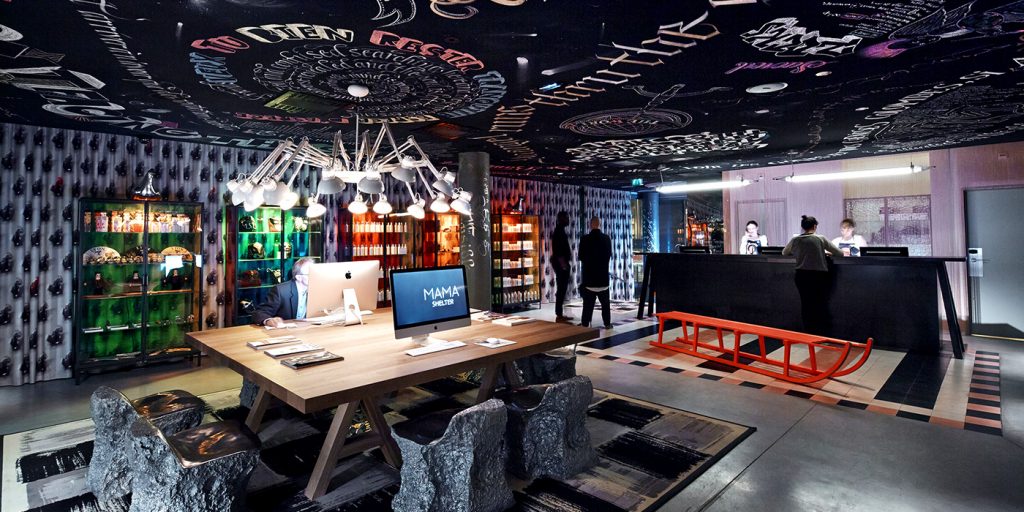9 cities, 6 countries, 9 restaurants, 1,156 rooms… Mama is everywhere and takes care of everything! Creator of living spaces and daily director, Mama Shelter has established itself in the heart of the most beautiful cities in the world to offer you an urban refuge that is both modern and full of spirit, but also warm and sexy. Skift reveals Mama’s recipe for success in its report “European Hospitality’s Creative Renaissance”.
After analyzing the pillars of hospitality in Europe, then deciphering the hybrid JO&JOE concept, Skift became interested in Mama Shelter. That’s good, Mama loves being in the spotlight!
Mama tells the story of its destinations
Upon first reading, Mama Shelter may seem like an odd name for a hotel company. But according to Serge Trigano, the founder of the brand, it makes all the sense in the world. “A shelter is where you feel protected from the aggravation of the city,” says Trigano, while “Mama is the person we love most in the world. She’s the one to tell you to eat even when you’re not hungry.”
The brand was launched in Paris in 2008, and has since expanded to 5 other locations in Europe, plus one property in Los Angeles and one in Rio de Janeiro. Internationally-known designer Philippe Starck has designed all of the properties in France. Elsewhere, other noted designers are charged with paying tribute to whatever the local vibe may be. All Mama Shelters are imagined as moderately-priced urban communes for digital nomads of all ages, incomes, and nationalities. They are sanctuaries pairing the comforts of home with the amenities required in this age of digitalization.
Dual expertise of an hotelier and a restaurateur
In developing the first Mama Shelters, Trigano worked closely with Starck to “create an inclusive place, where locals and tourists can come to feel the energy of the city.” At the same time, “Mama Shelter is about comfort, where you can feel secure and have a drink alone.” As for the design, “it’s simple, but sexy. In the rooms, most of our energy in terms of cost is going to the quality of the beds and the bedding.”
As SVP Design and Technical Services AccorHotels Damien Perrot notes, “It’s a midscale brand. We don’t need to put too many things in the room. How can we create a strong experience with minimalism? On the other hand, we put money, the value in the public areas, in the places where everything happens.” Yet throughout each property, Perrot says the design ethos is providing “surprise with small details that are not always expensive, but eclectic and fun.”
The sense of whimsy was part of what drew AccorHotels to establish a relationship with the brand in 2014.
According to Global Chief Development Officer AccorHotels Gaurav Bhushan, “What’s different about Mama Shelter is how it brings various hospitality elements together in a unified concept. The customer experience is very different from what you would see in a traditional hotel. It offers good food at accessible prices. Employees have a level of intimacy and informality of guest interaction without crossing the line of being too informal. And there is music, design, beverages…Mama Shelter is putting all the key elements together in a unique, cohesive, casual, and entertaining way.”
Indeed, food and beverage and entertainment (or FB&E, as Trigano calls it) are given equal consideration as the rooms. Each property is serviced by a trendy bar and a modern restaurant, many with open kitchens and communal dining options, along with spaces for live entertainment.
While these areas are designed to feel lively, fresh, and vibrant, Trigano feels it’s the employees who best evoke the brand’s DNA. “So many hotel brands believe that design is key to success, but I don’t think it’s the end of the story. We try to have nice design, of course, but the key is to find new staff with energy, who are open to customers…a team that speaks the language of the people who come. After all, at the end of the day, when people leave, what they tend to remember most is the quality of staff, then the food, then the design.”


